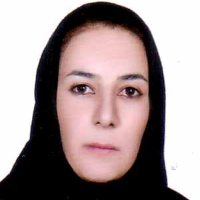Assessing the pathogenicity of Ascochyta rabiei isolates on different chickpea lines and their effect on some yield-related traits
Chickpea is cultivated in the rotation with wheat and barley which plays an important role in the sustainable agriculture in the western provinces of Iran. The production of chickpea is strictly limited due to some devastating fungal diseases such as Aschochyta blight disease.
During 2017-2018, chickpea fields were monitored for the suspicious samples. Then, they were transferred to the laboratory. 100 samples were recovered from 20 local areas, and all isolates were categorized into 20 groups based on the geographical regions. From each group, one representative was selected for further studies. To investigate the pathogenicity and morphological diversity, three different chickpea varieties were selected for this study. This investigation was performed in the completely randomized block with three replications, and some resistant and production-related features were measured. To determine disease severity, a 0–9 rating scale was applied.
In this investigation, 100 isolates from 20 local areas were selected. Subsequently, one representative from each group was selected. Based on the analytical results, the isolates were different in the pathogenicity and morphological at one percent probability level. Analytical approaches showed that interaction between isolates and varieties were different at all measured features at one percent probability. Among the varieties, for features such as the weight of 100 seeds, the number of sheet in each plant, number of shoots in each plant, plant height, wet and dry weight of root and upper parts were different at five percent similarity level. The variety of ILC482 was the most proficient with an average of 35 grams in 100 seed weight. 100 seed weight and the number of pods were affected by the disease more than other parameters. The evaluation of disease showed the variation among pathogenicity and morphological traits among isolates. In surveying the morphological parameters of isolates on CSMDA media, considerable differences were observed in colony color, pycnidium shape, and pycnidiospore. The isolates were divided into three groups: highly aggressive, medium aggressive and least aggressive based on the pathogenicity results. The isolates IL8, IL9, and IL10 had the highest pathogenicity on all cultivars. The isolate IL10 had the highest effect on morphological characteristics.
Resistant variety is the best method of control Ascochyta blight due to the high price of fungicides and their harms to the environment. Unfortunately, resistance is not durable for a long time because of the fungal population's diversity. The interaction of differential chickpea varieties and fungal isolates showed different virulence (p < /em><0.01).It indicates that varieties are in different levels of resistance level. These variations are necessary for the identification and classification of virulence levels among the isolates. Differential varieties should contain different resistant genes. Analytical results showed that probable differences exist between varieties and isolates at one percent probability. Our results revealed that the functional features of chickpea are affected by Ascochyta blight.
- حق عضویت دریافتی صرف حمایت از نشریات عضو و نگهداری، تکمیل و توسعه مگیران میشود.
- پرداخت حق اشتراک و دانلود مقالات اجازه بازنشر آن در سایر رسانههای چاپی و دیجیتال را به کاربر نمیدهد.


